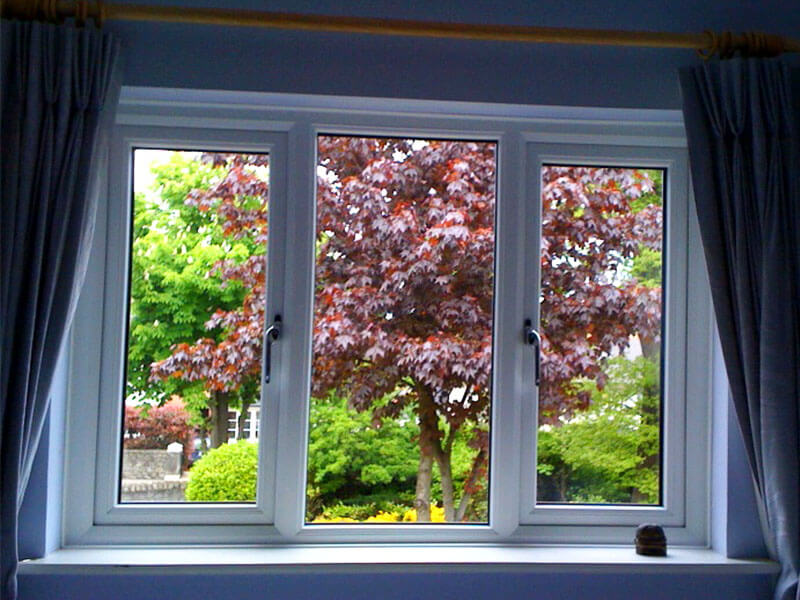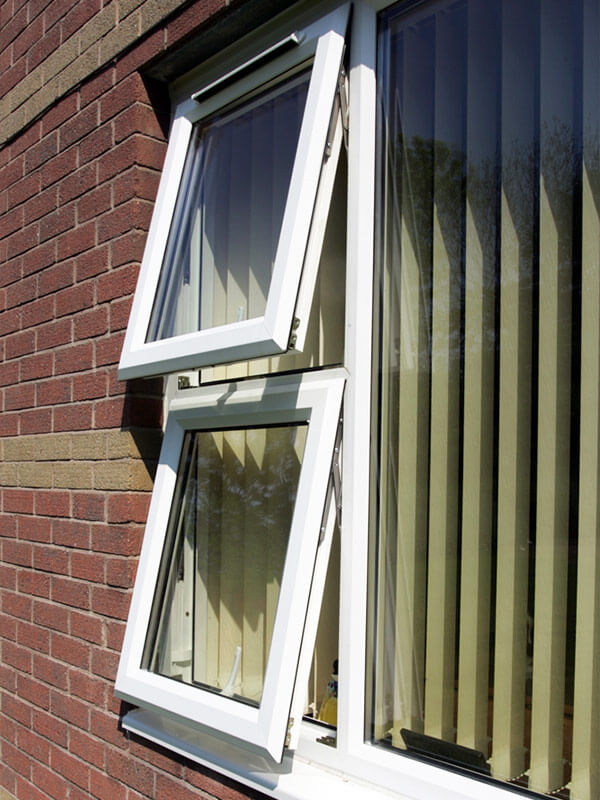Ever looked at your windows and wondered if they’re past their best? Maybe you’ve noticed them getting stiff when opening or felt a draught that wasn’t there before. If you’re like most homeowners in Northern Ireland, your windows aren’t something you think about until they start causing problems.
At Turkington Windows, we’ve installed countless uPVC windows over the last 30 years, and we often get asked two questions: How long do uPVC windows last, and do mine need replacing?
We’ve written this guide to discuss the lifespan of uPVC windows and help you decide whether you need to replace your current windows.

What is the Lifespan of UPVC Windows?
Most uPVC windows, with a small amount of maintenance, can last between 25 and 35 years. Unlike timber windows, which can rot or split if not regularly treated, uPVC is a durable material that stands the test of time. The whole window system is designed to withstand years of use.
What Affects How Long Your Windows Last?
Several factors can influence the lifespan of uPVC windows:
Quality of Materials
Not all uPVC is created equal. Higher grade materials resist fading and warping better than budget options. At Turkington, we use multi-chambered, reinforced 70mm profiles in our frames for extra strength and insulation.
Installation Standards
The quality of the installation makes a huge difference to how long windows last. Poorly fitted windows can lead to water ingress, draughts, and premature wear. Our installation teams are fully trained and experienced, ensuring your windows are correctly fitted.
Weather Conditions
Windows in coastal areas face more challenges from salt-laden air and stronger winds. Northern Ireland’s changeable weather can test windows, but good quality uPVC stands up well to these conditions.
Maintaining Your uPVC Windows
To get the maximum lifespan from your windows, some simple maintenance goes a long way:
Frame Cleaning
Clean the frames every few months with a soft cloth. Avoid abrasive cleaners that might scratch the surface or harsh chemicals that could damage the uPVC.
Looking After Hardware
Wipe down handles and hinges and apply a light lubricant like WD-40 to moving parts once or twice a year. This prevents stiffness and reduces wear when opening and closing.
Checking Seals
Inspect the rubber seals around the window panes regularly. These prevent moisture from getting between panes of glass and keep draughts out. If you notice any damage, they can often be replaced without needing a whole new window.
Signs Your uPVC Windows Might Need Replacing
Whilst these maintenance tips can help, even the best windows don’t last forever. Here are some signs it might be time for new ones:
Difficult Operation
Windows that are hard to open or close might have worn hinges or other hardware issues. Sometimes these can be repaired, but extensive problems might mean replacement is more cost-effective.
These issues are more than just an annoyance; they could compromise the locks and security of windows.
Draughts and Cold Spots
If you feel cold air around your windows even when closed, the seals might have deteriorated. Modern window designs have better seals and energy efficiency than older models.
Condensation Between Panes
Moisture or fogging on the window panes is common, but if you find droplets between the panes of glass, this indicates that the seal has failed. This reduces the window’s insulating properties and can’t be fixed – the sealed glass unit needs replacing.
Visible Damage
Cracks, warping, or discolouration of the uPVC frames suggests your windows are approaching the end of their life. UV damage can cause white uPVC to yellow over time, though modern windows are more resistant to this.
Rising Energy Bills
If your heating bills are climbing despite no change in usage, your windows might be losing their thermal efficiency. New windows with triple glazing or modern double glazing can make a big difference to your home’s warmth.

Turkington’s uPVC Window Range
At Turkington, we offer a variety of uPVC window styles that suit different homes and can make an excellent replacement for older windows:
Casement Windows
Casement windows are the UK’s most common type. These hinged windows open outward and offer excellent ventilation. They are equally suited in both modern and traditional homes.
Flush Sash Windows
These windows sit flush with the frame, replicating the look of traditional timber but with uPVC benefits. Our flush sash windows can achieve a U-value of just 0.90 with triple glazing, making them exceptionally energy efficient.
Sash Windows
For period properties, our sliding sash windows capture traditional charm without the maintenance headaches of timber. They achieve a 1.0 U-value and an A++ Window Energy Rating, which can completely transform the warmth and efficiency of an older home.
French Windows
These unique windows open outward from the middle with no central post, providing an unimpeded view and maximum ventilation when fully open.
Tilt and Turn Windows
Tilt and turn windows are a versatile option that either tilt inward at the top for ventilation or open entirely inward for easy cleaning; they are popular for upper floors and hard-to-reach areas.
All our window styles come with energy-efficient double glazing as standard, with triple glazing available for maximum insulation.

Time for New Windows?
If your uPVC windows are approaching the 20-year mark, or you’re noticing some of the issues mentioned above, it might be worth thinking about replacements. New uPVC windows offer improved security, better energy efficiency, noise dampening and greater options than older models.
To find out more about our uPVC window range, or to get advice about your current windows, we’d love to welcome you to one of our two showrooms in Lisburn or Portadown.
To discuss your needs and arrange a free, no obligation quote, call us on 0800 028 1812, email us at info@turkington-windows.com, or fill in our online contact form.
We’re always happy to help you make the right choice for your home.
Find Out More
The Ultimate Guide to Triple Glazing Benefits









